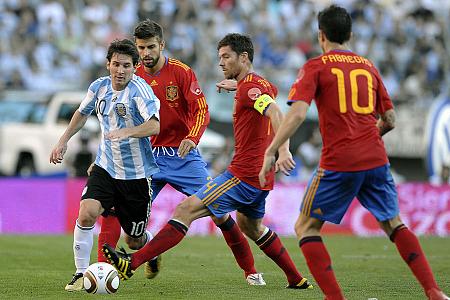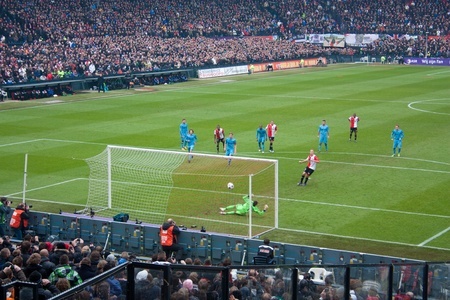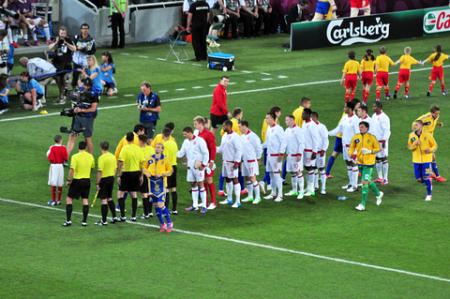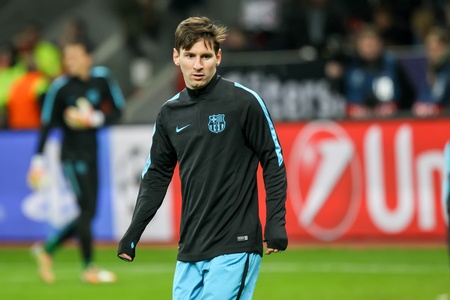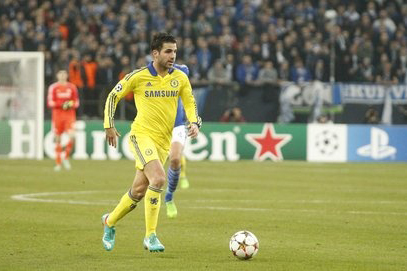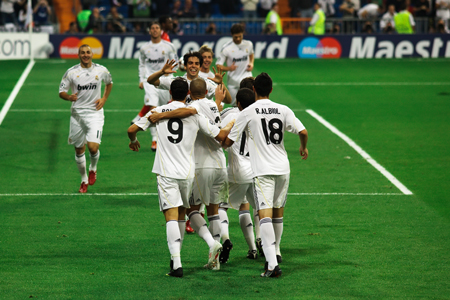The studies carried out since 2005 by the CIES Football Observatory are not only geared towards the general public, but are also useful to actors in the game. The 23rd Monthly Report illustrates an approach that allows a professional football league to analyse on an objective basis its international positioning and influence in a positive way the strategic choices of the clubs that compose it. The example chosen is that of the Swiss Football League.
Monthly Report 22
Goalkeepers: what kind of specifics?
Goalkeepers occupy a particular status in football teams. The qualities needed to play in this position are very different from those required from outfield footballers. Issue number 22 of the CIES Football Observatory Monthly Report compares goalkeeper characteristics with those of footballers playing in other positions. More particularly, the study examines the criteria of height, age, origin and mobility.
Monthly Report 21
Who will be champion? A predictive analysis of performance
The 21st Monthly Report of the CIES Football Observatory presents a predictive analysis of the number of points that each big-5 league club will obtain at the end of the season. In order to do this, we use a multivariate statistical model built on the basis of results observed from the 2011/12 season onwards. The model takes into account the offensive and defensive performances of big-5 league teams until the 31st December of each season, as well as the level of their grip on the game.
Monthly Report 20
The international mobility of minors in football
Issue number 20 of the CIES Football Observatory Monthly Report investigates the international mobility of minors in football. It notably reveals that the number footballers who left their country before to turn 18 playing in 31 top division leagues of UEFA member associations has reached a new record high in 2016. English clubs are by far the most active in the international recruitment of minors.
Monthly Report 19
Demographic study of football in Europe
The 19th Monthly Report presents the main findings of the annual census carried out since 2009 by the CIES Football Observatory on the profile of players active in 31 top division leagues of UEFA member associations. The study shows that the presence of club-trained players continues to decrease, while that of expatriates is on the increase. The greater international mobility of players brings with it a growing instability in squads.
Monthly Report 18
Recruitment strategies throughout Europe
The 18th Monthly Report of the CIES Football Observatory analyses the recruitment strategies followed by clubs from the five major European championships. The Report shows that the most competitive teams pursue a transfer strategy based on quality. They focus on the fee paying transfer of young players with high potential and hold on to those who perform best over the long term. In addition, the wealthiest teams tend to recruit more internationally than those with lesser means at their disposal.
Monthly Report 17
Transfer fees: monetary flows in European football
The 17th edition of the CIES Football Observatory Monthly Report analyses monetary flows related to the transfer of players within European football. Since 2010, big-5 league team investments have grown almost continually year after year to reach a new record of €4.2 billion in 2016. English Premier League clubs account for about 40% of the total expenditure.
Monthly Report 16
Transfer values and probabilities
The 16th edition of the Monthly Report presents the exclusive approach developed by the CIES Football Observatory research team to estimate both the transfer value and the fee paying transfer probability of professional footballers. The methodology is illustrated through the presentation of the big-5 league players who, on June 1st 2016, were at the top of the rankings for both transfer value and probability.
Monthly Report 15
Technical analysis of player performance
Issue number 15 of the Monthly Report presents the exclusive method to objectively measure the technical performance of players that the CIES Observatory has been developing since 2010. The approach is illustrated by presenting the rankings of the best big-5 footballers in 2015/2016 per both area of the game and position. The Report also identifies the best performing players in comparison to teammates. This type of analysis is particularly useful in unveiling the potential of footballers who do not yet play for the most competitive clubs.
Monthly Report 14
Spotting future stars
As a continuation of the analysis published in February 2015, this Monthly Report presents the experience capital approach developed by the CIES Football Observatory to identify players most likely to succeed in their career. The Report presents the most experienced U23 players taking part in 31 top division leagues of UEFA member associations. The study also highlights the crucial role played by competitions outside of the big-5 leagues in the sporting development of footballers present in these championships.
Monthly Report 13
The fielding of young footballers in Europe
The thirteenth edition of the CIES Football Observatory Monthly Report analyses the evolution of the fielding of young players in 31 European top division leagues. Between 2009 and 2015, the overall percentage of minutes played by U22 footballers has remained stable. However, for young nationals this figure has decreased. This trend reflects the growing mobility of players from a very early age.
Monthly Report 12
Foreign players in football teams
The twelfth Monthly Report of the CIES Football Observatory analyses the presence of foreign players in 37 top division leagues worldwide: 12 European, 12 Asian, 12 from Latin America and the American MLS. Overall, foreign players represent 26.6% of squads, with a maximum of 66.5% in the English Premier League and a minimum of 6.1% in the Brazilian Serie A.
Monthly Report 11
Squad profile of the best performing national A-teams
Issue number 11 of the Monthly Report compares the profile of 50 national A-team squads at worldwide level from the perspective of age, height, employer clubs and place of birth. The study notably shows the high concentration of talent in the wealthiest leagues. Almost one minute out of two was played by big-5 league footballers. In total, 68.9% of minutes were played by footballers under contract with foreign clubs. England is the only squad who did not field footballers playing abroad.
Monthly Report 10
Relative age effect: a serious problem in football
The tenth Monthly Report of the CIES Football Observatory analyses the relative age effect on the possibility of a career in football. The study shows that players born in the first months of the year are over-represented among professional footballers. It also highlights the existence of a selection bias favouring players with precocious physical development. The limiting of this phenomenon would reinforce meritocracy in football.
Monthly Report 9
Youth training in European football: a comparative analysis
Youth training is of fundamental importance for football. Without quality training, the sporting development of the game cannot be guaranteed. The level of spectacle would also be diminished, thus limiting the economic potential of the sport. Issue number 9 of the Monthly Report analyses trends in the percentage of club-trained players in 460 teams of 31 top division European leagues. It also presents clubs who have trained the most footballers participating in these competitions.
Monthly Report 8
Exporting countries in world football
The eighth edition of the CIES Football Observatory Monthly Report analyses the origin of foreign players in 6,135 professional and semi-professional clubs, within 458 leagues located in 183 countries worldwide. In total, 18,660 foreign players from 194 origins were recorded. The study notably shows that Brazil is the most represented among foreign nationals, followed by Argentina and France.
Monthly Report 7
How to build a team for long term success?
Since 2005, the CIES Football Observatory has developed pioneering data analysis to understand the logics of success in football. This Monthly Report unveils the key findings related to the four main dimensions of sustainable squad management: team chemistry, demographic structure, performance analysis and transfer policy.
Monthly Report 6
Transfer values and probabilities
The CIES Football Observatory has built powerful econometric models to estimate both transfer values and transfer probabilities of professional football players. This Monthly Report describes the exclusive approach developed and lists the big-5 league footballers with the highest transfer values and fee-paying transfer probabilities at the end of the 2014/15 season.
Since 2010, the CIES Football Observatory has been developing an innovative approach to the technical analysis of performance in football both at team and player levels. This paper details the methodology used, which is exemplified through the presentation of the best clubs and players for the 2014/15 big-5 league season.
Monthly Report 4
Squad analysis: who will win the Champions League?
The fourth edition of the CIES Football Observatory Monthly Report presents an in-depth analysis of the squad composition of teams qualified for the 2014/15 Champions League quarter-finals. Using values measured for the last five winners, the study identified Real Madrid as the favourites. In the end, the trophy was lifted by their historical rivals Barcelona.
Monthly Report 3
Transfer expenditure and results
This Monthly Report analyses the evolution of transfer sums paid by clubs in the five major European leagues from the 2009/10 season up until 2014/15. It shows that ever-increasing amounts of money are at stake in the transfer market of football players. In parallel, a process of concentration of expenditure at the top of the pyramid is taking place. This reinforces the domination of the wealthiest clubs. A reform is proposed to improve the redistributive factor of the transfer system.
Monthly Report 2
Talent scouting: an experience capital approach
Playing numerous games during the first years of a professional career is an essential condition in order to be able to compete in the top level leagues worldwide. This Monthly Report introduces the exclusive “experience capital” approach developed by the CIES Football Observatory research team and identifies the most promising U23 players in 31 top division championships of UEFA member associations.
Monthly Report 1
Club instability and its consequences
The first edition of the CIES Football Observatory Monthly Report deals with the reasons and consequences of the increasing level of club instability in Europe. The study shows that stability gives clubs a competitive advantage over rival teams, be it on a sporting level with better medium and long-term results and from an economic perspective with a greater capacity to launch careers of club-trained players and generate revenues through their transfer.



